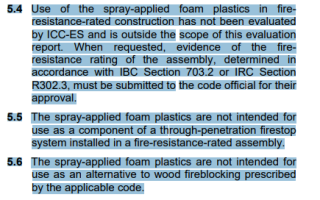bill1952
SAWHORSE
I understand the basic requirements for 1/2 or 5/8 gwb but 2 questions:
If the dwelling and garage are fire sprinklered, is the gwb still required? I think so but not sure.
Any penetrations of the gwb, 2024 IRC refers to R302.11 Fireblocking. and no. 4. At openings around vents, pipes, ducts, cables and wires at ceiling and floor level, with an approved material to resist the free passage of flame and products of combustion. The material filling this annular space shall not be required to meet the ASTM E136 requirements. Examples of approved materials? 10 or more years ago I used Great Stuff Fireblock around a pipe and the inspector rejected it. I had to remove it and instead use sheet rock mud. Was inspector's objection to the Great Stuff Fireblock product usual?
If the dwelling and garage are fire sprinklered, is the gwb still required? I think so but not sure.
Any penetrations of the gwb, 2024 IRC refers to R302.11 Fireblocking. and no. 4. At openings around vents, pipes, ducts, cables and wires at ceiling and floor level, with an approved material to resist the free passage of flame and products of combustion. The material filling this annular space shall not be required to meet the ASTM E136 requirements. Examples of approved materials? 10 or more years ago I used Great Stuff Fireblock around a pipe and the inspector rejected it. I had to remove it and instead use sheet rock mud. Was inspector's objection to the Great Stuff Fireblock product usual?

